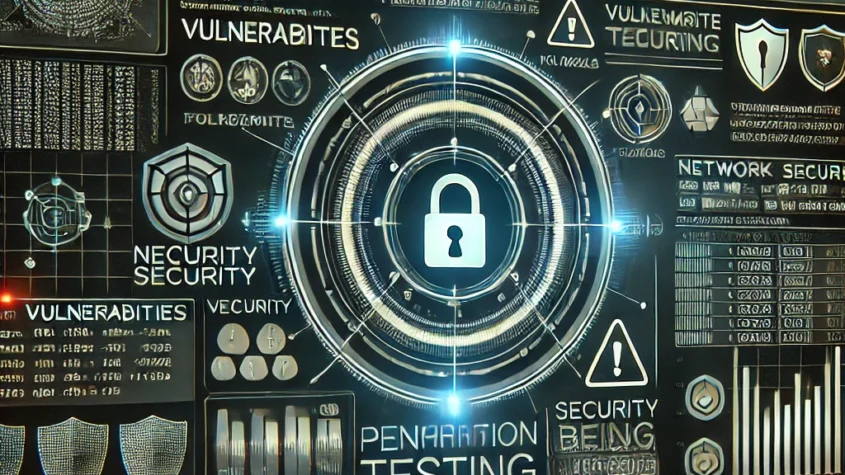
Penetration testing pricing can vary significantly based on various factors. The complexity of the network, the scope of the testing, and the experience of the testing team all play crucial roles in determining the final cost. Typically, businesses can expect to pay anywhere from a few thousand dollars to tens of thousands, depending on their specific needs and requirements.
Many organizations underestimate the importance of comprehensive penetration testing until they experience a security breach. By investing in this proactive approach, they can identify vulnerabilities before malicious actors exploit them. Understanding these costs is essential for companies looking to enhance their security posture and protect their valuable assets.
Selecting the right penetration testing provider is also a critical factor in pricing. Companies must consider not just the cost but the expertise, reputation, and methodologies employed by the testers. This decision can greatly influence the effectiveness and value of the testing done.
Penetration Testing Pricing Fundamentals
Understanding how penetration testing is priced involves examining various cost factors, the types of tests available, and the different pricing models used by providers. Each aspect plays a crucial role in determining the overall expense of penetration testing services.
Understanding the Cost Factors
Several factors influence penetration testing prices. The complexity of the system being tested is a primary consideration. Larger, multi-layered systems typically require more time and expertise, resulting in higher costs.
The scope of the test also affects pricing. A comprehensive evaluation covering multiple areas will cost more than a targeted assessment. Provider experience and qualifications can further drive up rates. Certifications such as CEH or OSCP indicate a higher level of expertise, which may influence budget considerations.
Finally, geographical location can impact pricing. Areas with a higher cost of living may see elevated fees compared to regions with lower economic demands.
Types of Penetration Tests
Penetration tests can vary significantly based on focus and approach. Common types include:
- Network Penetration Testing: Analyzing the security of networks, systems, and devices.
- Web Application Penetration Testing: Evaluating web applications for vulnerabilities such as SQL injection or cross-site scripting.
- Mobile Application Penetration Testing: Assessing mobile apps for security flaws that could be exploited.
Each type requires different methodologies and tools, affecting the price. Comprehensive tests covering more than one category will generally cost more due to the increased effort and time involved.
Pricing Models
Several pricing models are employed in the industry, each catering to different client needs.
- Fixed Price Model: Provides a predetermined cost for the scope of work outlined in the contract. This model is suitable for well-defined projects.
- Time and Materials Model: Charges clients based on the actual hours worked and resources used. This model is flexible for ongoing projects but can lead to variable costs.
- Subscription-Based Model: Offers regular testing on a recurring basis. Clients pay a flat fee for ongoing monitoring and assessments, which can be budget-friendly for continuous security needs.
By understanding these models, businesses can better align their budgets with their specific security requirements.
Factors Influencing Penetration Testing Costs
The cost of penetration testing is determined by several interconnected factors. Each element plays a crucial role in establishing the total expenses involved.
Scope of the Penetration Test
The scope of a penetration test significantly affects its cost. A broad scope, encompassing multiple systems, applications, or networks, typically incurs higher expenses than a limited one. Clients must define whether the test will focus on a single application, an entire network, or both.
Additionally, scalability matters. A test designed for large organizations will require more resources and time. More extensive tests involve deeper analysis, which directly impacts pricing.
Factors such as location, duration, and testing types—like external and internal testing—also contribute to the overall expense. Each defined component aligns the costs with client requirements.
Tester Skill Level and Expertise
The expertise of the penetration testing team has a direct influence on the cost. Highly skilled testers with certifications, such as CEH (Certified Ethical Hacker) or OSCP (Offensive Security Certified Professional), typically charge higher rates.
Experience matters too. Firms with a longstanding track record and a wealth of successful assessments often command premium pricing due to their proven methodologies.
Clients must weigh the balance between cost and quality. Lower-cost options might pose risks if test quality and accuracy are compromised. Selecting reputed testers ensures a thorough evaluation.
Complexity of the IT Infrastructure
A complex IT infrastructure requires more time and specialized knowledge to assess vulnerabilities. Organizations with intricate set-ups, such as hybrid cloud systems or multi-tier applications, often face higher costs due to tailored testing approaches.
In contrast, a simpler infrastructure may reduce expenses. However, even simple systems need thorough evaluations to uncover hidden vulnerabilities.
The diversity of technologies employed and their interconnectivity is paramount in calculating costs. Therefore, clients should communicate their infrastructure’s complexity accurately to receive an appropriate quote.
Compliance and Regulatory Requirements
Many organizations operate under strict compliance and regulatory frameworks. These requirements impact penetration testing costs significantly. Regulations such as PCI-DSS, HIPAA, and GDPR necessitate specific testing protocols, often leading to more extensive evaluations.
Compliance efforts usually entail additional documentation, which can increase costs. Preparing detailed reports and remediation plans tailored to these regulations requires additional resources and time.
Failing to adhere to compliance mandates can result in fines and legal penalties. Therefore, understanding these requirements before quoting is essential for accurate pricing.
Reporting and Follow-Up Services
The quality and detail of reporting directly influence penetration testing prices. Comprehensive reports containing detailed findings, risk assessments, and remediation guidance tend to increase costs.
Follow-up services, including retesting and consultations, are also significant factors. Many firms offer post-test support, helping businesses address identified vulnerabilities.
Clients should assess their need for ongoing assistance when budgeting for penetration testing. Investing in thorough follow-up services often leads to more effective vulnerability management.
Zudio Online Shopping: Discover Affordable Fashion Trends Online
Zudio online shopping offers a unique platform for budget-conscious shoppers seeking styli…









